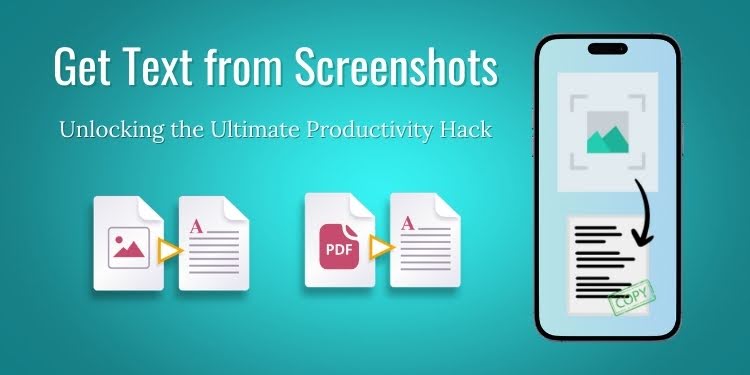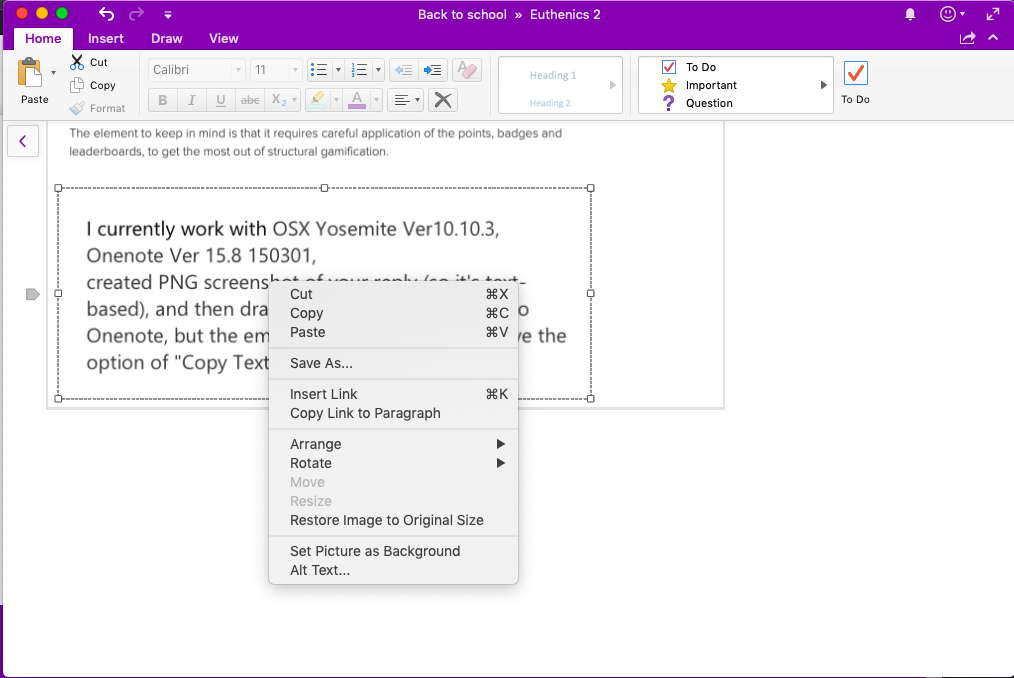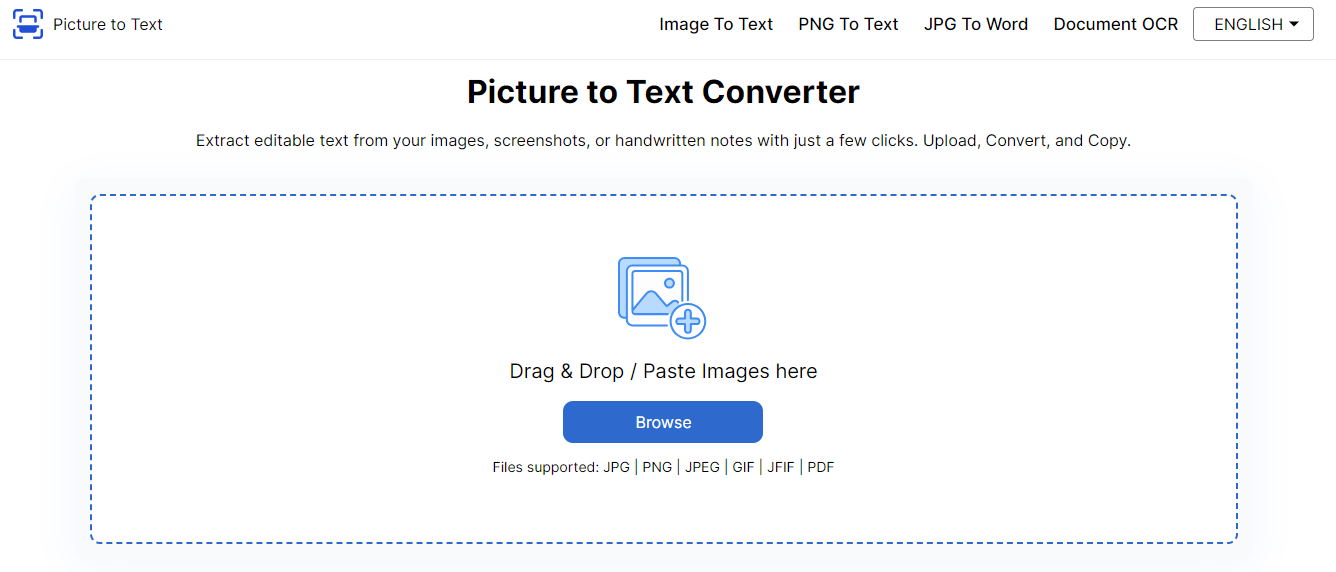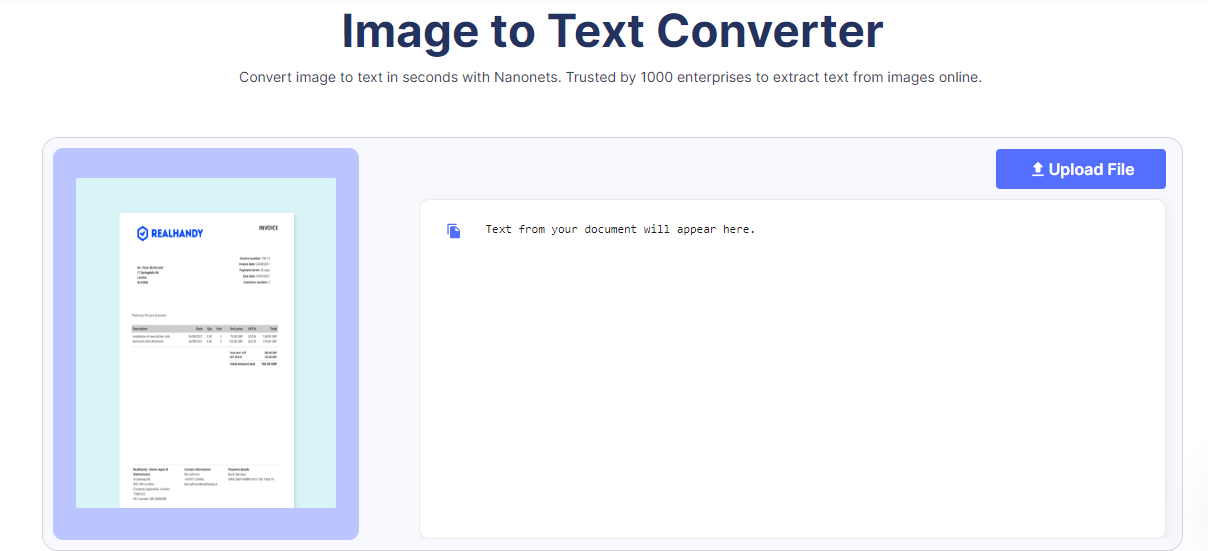8
min read
Get Text from Screenshots: Unlocking the Ultimate Productivity Hack
Published on :
June 17, 2024

Have you ever spent hours retyping information from websites or documents instead of copying and pasting the text? We used to fall into that trap until we discovered the hidden power of extracting text from screenshots.
By simply taking a screenshot and running it through an OCR tool, we could instantly digitize all that text with just a few clicks. It was a productivity game-changer! In this article, we’ll share how this technique transformed our workflow and helped us reclaim hours each week.
From practical tools to best practices, you’ll learn everything you need to automatically “copy” text from any image on any device.
Why Extract Text from Screenshots?
There are so many reasons to extract text from screenshots. It allows you to digitize paper documents, capture information from websites and apps, translate text into other languages, and more.
You can copy and paste text with just a few clicks rather than retyping text by hand. This small task can save precious time that you can reinvest elsewhere.
Uses and Benefits
Being able to extract text from screenshots opens up many possibilities. It allows you to digitize content on paper or from other devices easily. Rather than retyping, you can copy essential notes, citations, instructions, and more with a simple screenshot.
This saves significant time otherwise spent manually typing. It also improves accessibility by enabling screen readers to vocalize captured text. Some everyday use cases include transcribing notes from lectures, meetings, or books. Research papers can benefit from extracting quotes and references online.
Receipts, invoices, and manuals can be converted into organized digital files. Text recognition makes translating menus, signs, and instructions during travel simple. This technique's versatility and convenience can boost productivity across domains.
Understanding Text Extraction
Text extraction involves Optical Character Recognition (OCR) technology. OCR uses artificial intelligence to detect text within images and convert it into an editable format. It scans images, recognizes characters, and transcribes them into an editable document.
This process makes text searchable, copy-pasteable, and accessible to assistive technologies like screen readers. Major tech companies constantly improve OCR to handle more languages and edge cases.
Tools and Methods for Text Extraction from Screenshots
There are many different ways to extract text from screenshots. Desktop apps, online tools, and mobile options all make it simple. Learning the most valuable tools will save you loads of time.
Desktop Applications
One of the easiest methods is to use the built-in screenshot tools on Windows and Mac. Here are some fantastic built-in tools for extracting text from screenshots and images.
- Snipping Tool: Built-in Windows Tool
The Snipping Tool is a handy screenshot program that is included in Windows. It acts as a snipping tool for selections and an inline OCR tool. To use it for OCR:
- Simply take a screenshot of the area containing text.
- Next, select the Text tool from the toolbar. This will prompt the tool to scan the image for text.
- Once it finishes recognizing characters, you can easily copy the extracted text.
- The text retains a natural formatted look.

The Snipping Tool works on JPEGs, PNGs, and other standard formats. It even supports PDFs by taking a screenshot of the page first. This built-in program makes text extraction quick and straightforward for Windows users, with no downloads required.
Microsoft OneNote & Google Keep
Both OneNote and Google Keep offer intuitive inline OCR capabilities when importing screenshots.
- Simply open the screenshot in OneNote or attach it to a Keep note.
- The programs will automatically scan and extract any detected text beneath the image.
- This text can then be selected, copied, and used elsewhere.

Both tools are cross-platform and sync notes across devices. While the OCR accuracy may be more potent than that of dedicated software, OneNote and Keep provide effortless alternatives for brief screenshots taken on the go. The extracted text saves time otherwise spent retyping content manually.
Online Image to Text Converter:
There are multiple online tools, but these are some popular free online OCR tools for extracting text from images efficiently.
Picture to Text

This Picture to text converter allows users to extract text from images, screenshots, handwriting notes, and more. Whether users need to transcribe handwritten notes, scanned receipts, or text from websites, this online tool does the job. PictureToText is ideal for converting image text into an editable, searchable format for documents, research, assignments, and other use cases.
The method to use PicturetoText is simple:
- Head to Picture to text Converter
- Upload or Copy/Paste the screenshot into the input box
- After Images uploading, Hit the convert button to start the conversion process.
- Extracted text appears within seconds and can be copied to a clipboard or downloaded.
It supports various formats, such as JPG, PNG, and PDF, and allows free batch uploads of up to 5 images. It recognizes text in over 20 languages, so content in other languages can be extracted and translated. No images or data are stored, ensuring security and privacy during optical character recognition.
Nanonotes

Nanonotes is our second favorite AI-based OCR platform. It provides quick document processing and other automation solutions. It uses deep learning-based image extraction recognition models to extract text from images.
How to use Nanonets OCR:
- Go to the site and click on the 'upload file' button.
- Choose your screenshot or Image.
- It will take some time to process, and your extracted text will appear.
- You can copy the text and also export the txt file.
Mobile Apps
Mobile OCR allows text from physical documents to be extracted on the go without a computer or internet connection. It boosts productivity for taskers, students, and other mobile users. Many mobile apps provide OCR functionality directly on smartphones and tablets:
iOS Live Text
iPhones with iOS 15 or newer have a handy “Live Text” feature. Users select text within Photos or in the viewfinder to copy or share it.
Adobe Scan & CamScanner: Android
Android users can try popular apps like Adobe Scan and CamScanner. These let users take photos of documents or whiteboards, which are then processed using OCR.
- Adobe Scan extracts text accurately while allowing annotations and workflow automation. It supports 50+ languages and formats, such as PDFs.
- CamScanner is best for digitizing receipts and printing multi-page scans as high-quality PDFs. It detects edges to optimize file size during OCR.
- Other options include Microsoft Lens, Evernote Scannable, and Google Drive Scan. These combine powerful OCR with cloud syncing for accessibility across devices.
Step-by-Step Guide: Extracting Text from Screenshots
Follow these simple steps to ensure smooth and accurate text extraction from screenshots every time.
- Capture a high-quality screenshot: To capture a screenshot, press shortcut keys like Windows+PrntScrn or Ctrl+Cmd+Shift+4 on Mac. Make sure the text area is visible.
- Select the appropriate tool or service: Based on your needs and file format, choose a tool like a built-in snipping tool, photo text websites, or mobile apps.
- Upload or import the screenshot: Upload the screenshot file by dragging it onto the tool’s interface or browsing for it. Some tools support direct screenshot pasting.
- Configure OCR settings (if applicable): Configure any recognizable languages or region settings if the tool has advanced options.
- Processing the screenshot and extracting text: Hit the scan button to initiate OCR. Most process screenshots instantly, but videos may take longer.
- Review and refine the extracted text (if necessary): If the tools allow, review the extracted text output for accuracy; manually correct errors by re-running or refining the selection areas. Copy the proper text for further use.
Use Cases
Text extraction supports a wide variety of use cases. Students can digitize handwritten notes to study on the go. Researchers can extract citations and quotes for papers. Small businesses can turn paper receipts into digital records for accounting.
Travelers can translate menus and signs in foreign countries. Assistive technologies benefit many users with visual impairments. The possibilities are endless!
Best Practices
Use high-resolution images in standard formats like JPGs and PNGs for best accuracy. Avoid complex backgrounds, small text sizes, and low-contrast colors. Extracted text quality depends on the OCR model and image properties.
Double-check important text for errors. Respect copyright and only extract text you have permission to use. Most services don’t store images, but be mindful of privacy and data security.
Conclusion
As you can see, extracting text from screenshots is a true productivity game changer. With so many easy-to-use tools, digitizing text across devices, languages, and use cases has never been simpler.
Try incorporating this technique into your work, school, or personal project workflow. You’ll be amazed by the time it can save you each day. We’ll continue exploring new ways to supercharge my productivity with text extraction.
Summary

